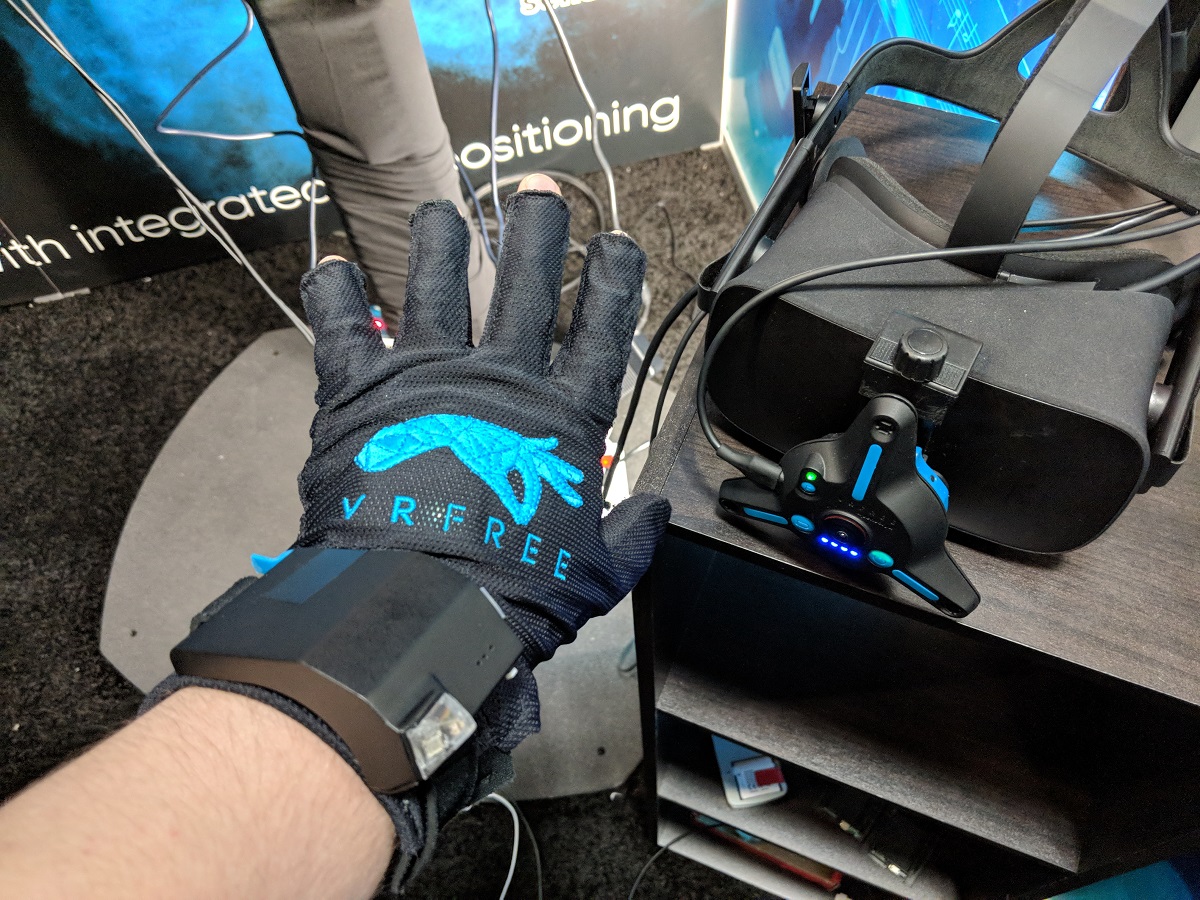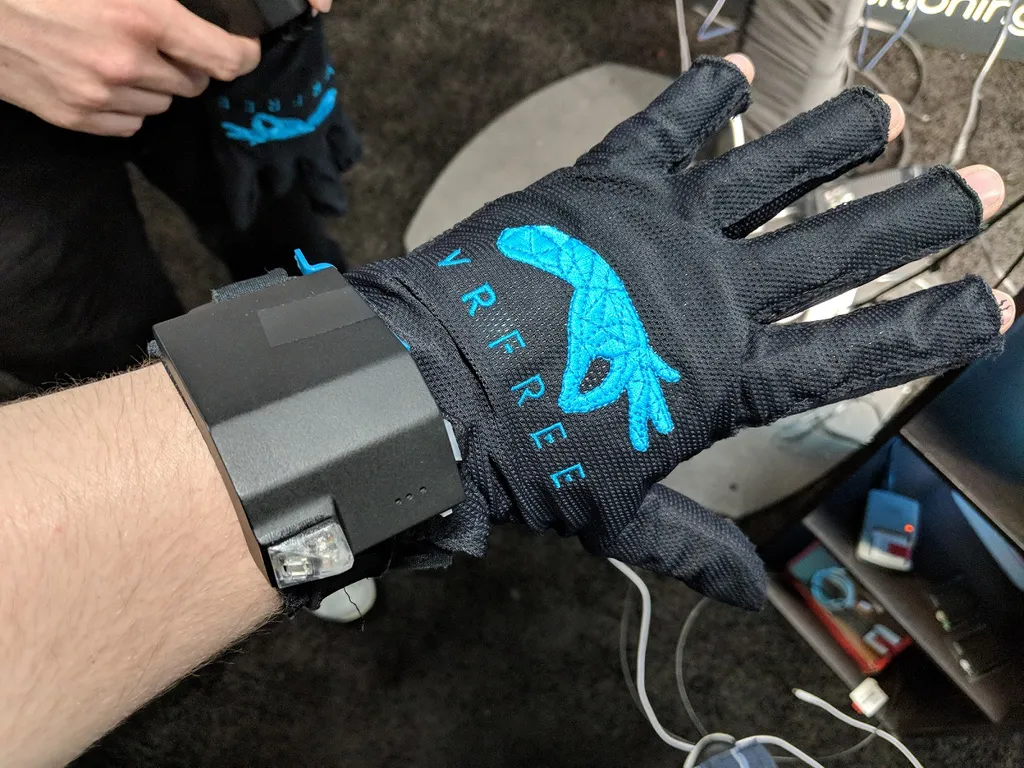One of my favorite pieces of tech that I saw at CES 2018 was the Maestro Contact CI haptic glove. Using little tiny motors, electronic tendons, and lots of wires, it was able to simulate what it would feel like to actually touch something in the virtual world. The VRfree gloves by Sensoryx are another glove solution I tried last week in Las Vegas, but this time they have a specific focus on hand and finger tracking instead, which is just as important for very different reasons.
Right now, the most popular input method for most VR content is to use handheld motion controllers like the Oculus Touch, PS Move, or Vive wands. These controllers track your hand’s movement through 3D space well and let you do simple things like pull triggers and pick things up. However, with a heavy reliance on button interfaces still it’s not an ideal way to truly feel like you’re part of the VR world.
Naturally, I was quite excited for my demo with the VRfree gloves since it meant reaching out and touching things with my hands and fingers instead of a hunk of plastic. All you do is strap this weird triangular sensor device (shown below) to the front of a headset and you’re good to go. It’s nice and light so you don’t even notice the weight difference.

The demo I tried included a handful of different interactions. Everything started with me standing in a very IKEA-inspired kitchen environment in front of a kitchen sink. I reached out with my right hand and turned on the faucet by grasping it with my fingers and the palm of my hand, then twisting. Water came pouring out in big glops.
To my side was a cup, which I grabbed and filled up, then proceeded to pick up a bowl to fill up as well. After that, because utilities are expensive, I turned the faucet off. It all worked seamlessly with great tracking, which is great to see. Previously I’d tried an old prototype of the Manus VR gloves, but these feel like an improvement. The tracking sensors inside the fabric were light and I quickly forgot I was wearing anything at all on my hand in the first place.
The rest of my demo consisted of playing piano — which was neat, given the individual finger tracking accuracy — as well as shooting a gun at a target. Instead of holding down a grip button like you would on Vive or Rift, I just grasped it with my fingers and then pulled my index finger in towards me to pull the trigger. The tracking here was a little less precise because of how fine the movements were, but as long as I pressed my finger down very deliberately the gun fired when I expected it to.
I asked the team behind the VRfree gloves about haptic feedback, but that isn’t something that’s really on their immediate roadmap. They’re focused on getting finger and hand tracking down first.
As with any tech like this, the VRfree gloves are very impressive, but I’m not sure how they fit into the broader consumer VR market at the moment. But just getting them out there into people’s hands is the most important first step.
Let us know what you think down in the comments below!



























